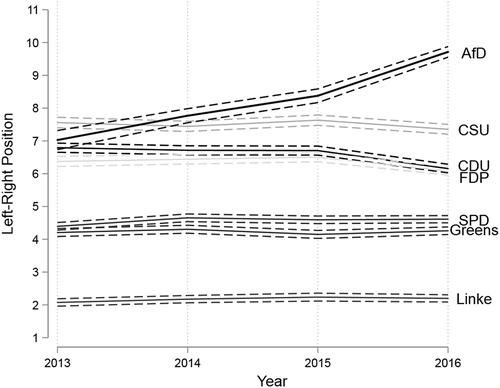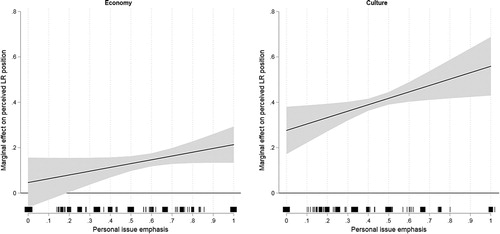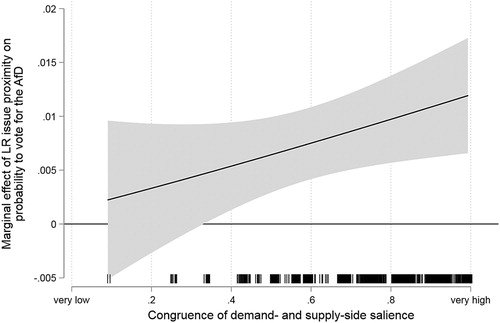Figures & data
Figure 1. German citizens’ perceptions of party left-right positions (means).
Note: German Longitudinal Election Study, Rattinger et al. (Citation2015a, Citation2015b) and Roßteutscher et al. (Citation2016). Dashed lines indicate 95% confidence intervals for the mean perceived party positions. AfD, Alternative for Germany; CDU, Christian Democratic Union; CSU, Christian Social Union; FDP, Free Democratic Party; Greens, Alliance 90/The Greens; Linke, The Left; and SPD, Social Democratic Party of Germany.

Table 1. Explaining voter perceptions of the AfD’s policy position on the left-right scale.
Figure 2. Supply-side effects on issue mapping, party issue emphasis (H1).
Note: Solid lines show the marginal effect of the economic (left panel) and the cultural issue position (right panel) depending on the attention to these issues in the party’s press releases (x-axis). The vertical bars denote the empirical values in party issue emphasis for both sub-dimensions. Shaded areas denote 95% confidence intervals. All estimates based on the Tobit model shown in Table 1.

Figure 3. Demand-side effects on issue mapping, personal issue emphasis (H2).
Note: Solid lines show the marginal effect of the economic (left panel) and the cultural issue position (right panel) depending on the respondents’ issue emphasis (x-axis). The vertical bars denote the empirical values in personal issue emphasis for both sub-dimensions (small jitter added). Shaded areas denote 95% confidence intervals. All estimates based on the Tobit model shown in Table 1.

Figure 4. Conditioning effect of salience congruence on left-right proximity for AfD vote intention.
Note: Solid lines show the marginal effect of the left-right proximity depending on the congruence of demand- and supply-side salience (x-axis). The vertical bars denote the empirical values in congruence (small jitter added). Shaded areas denote 95% confidence intervals. All estimates based on the logit model shown in Appendix G.

